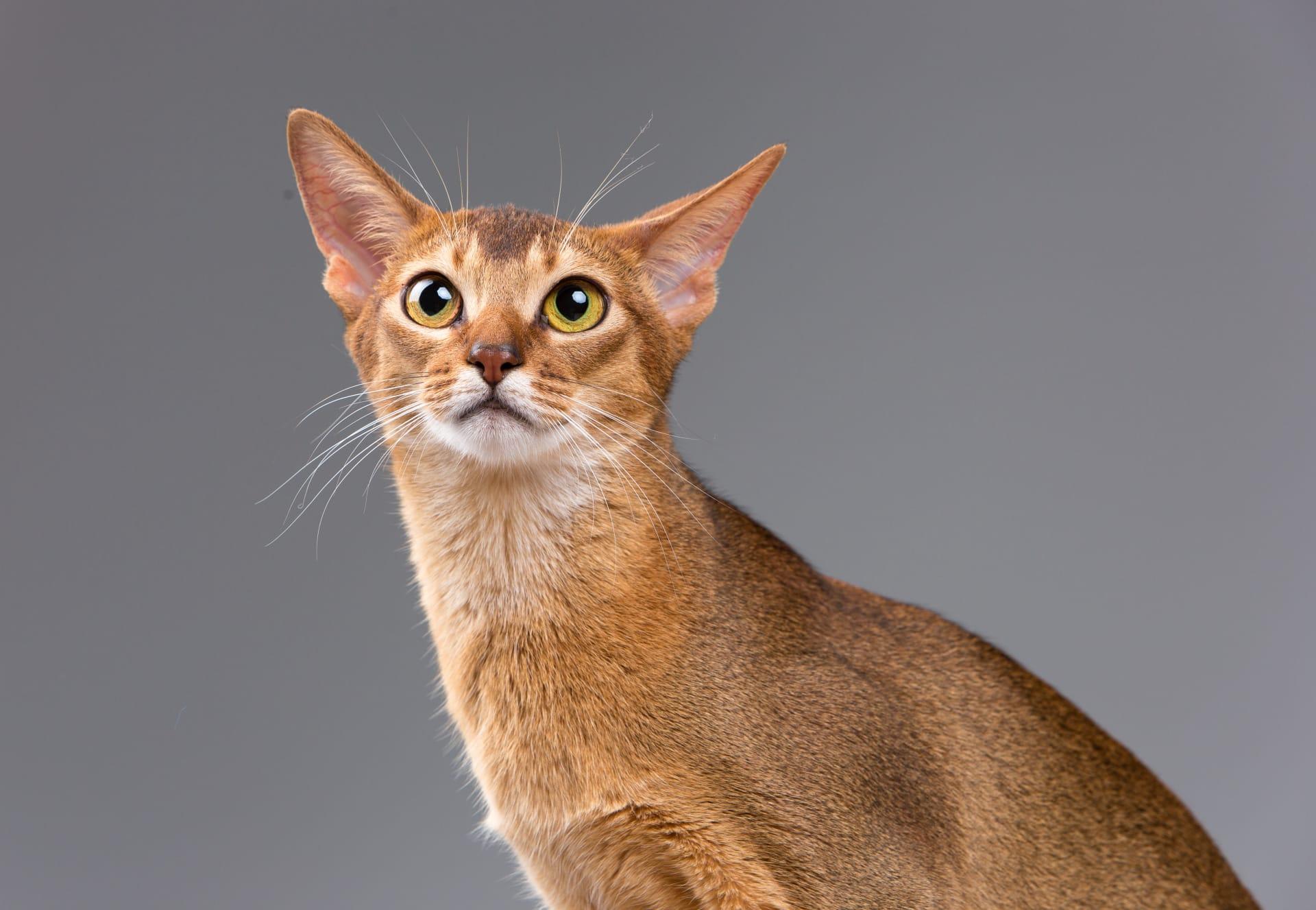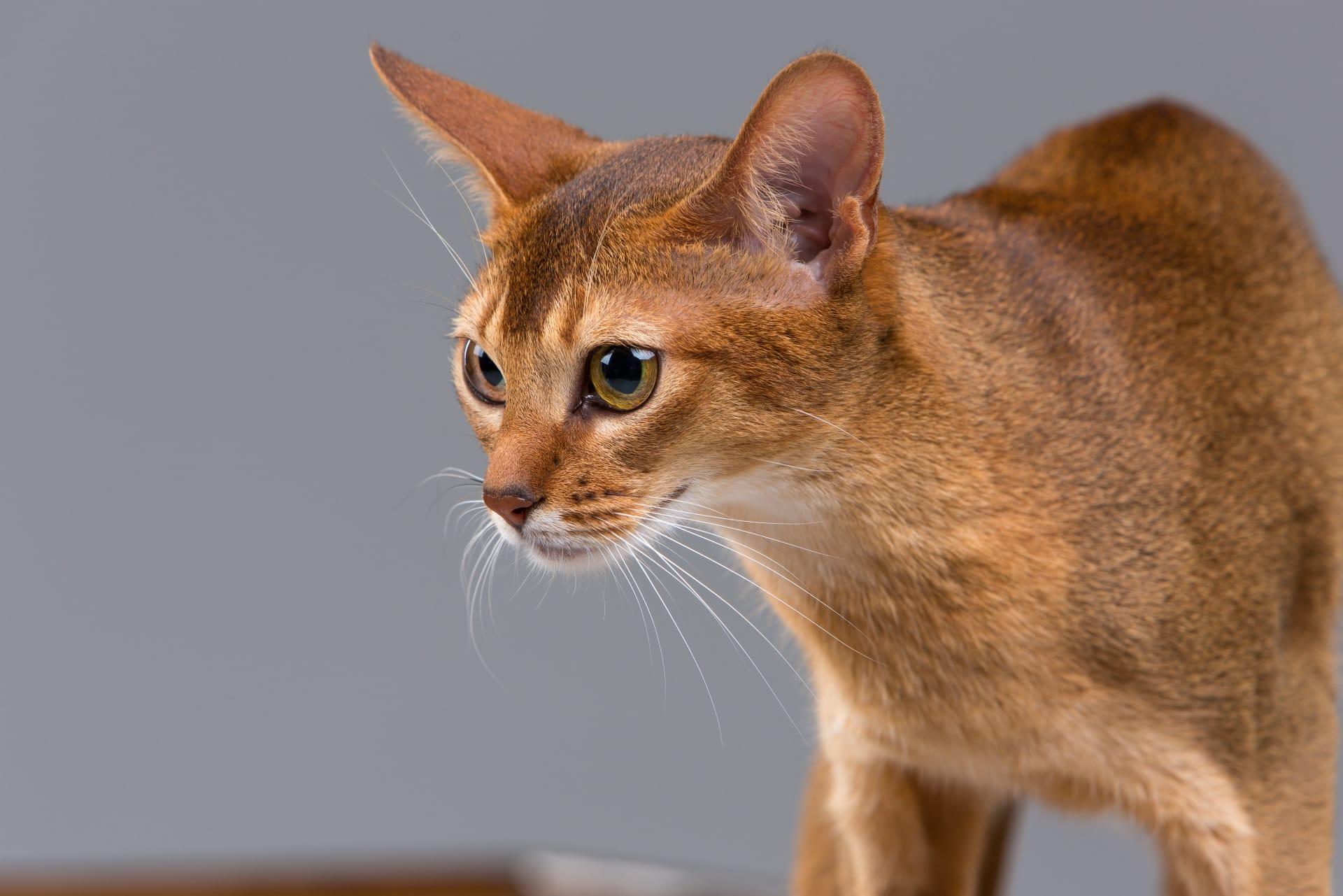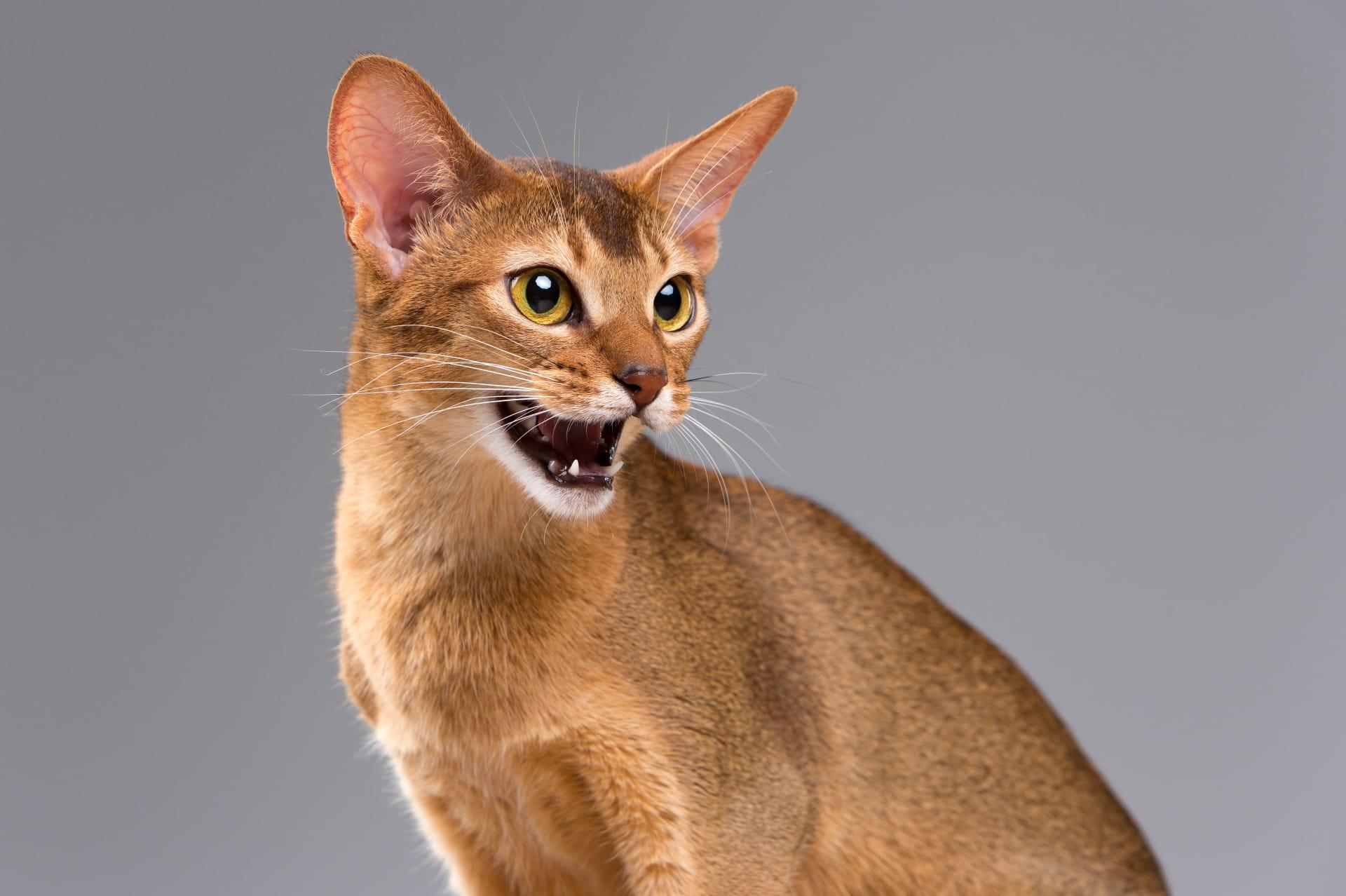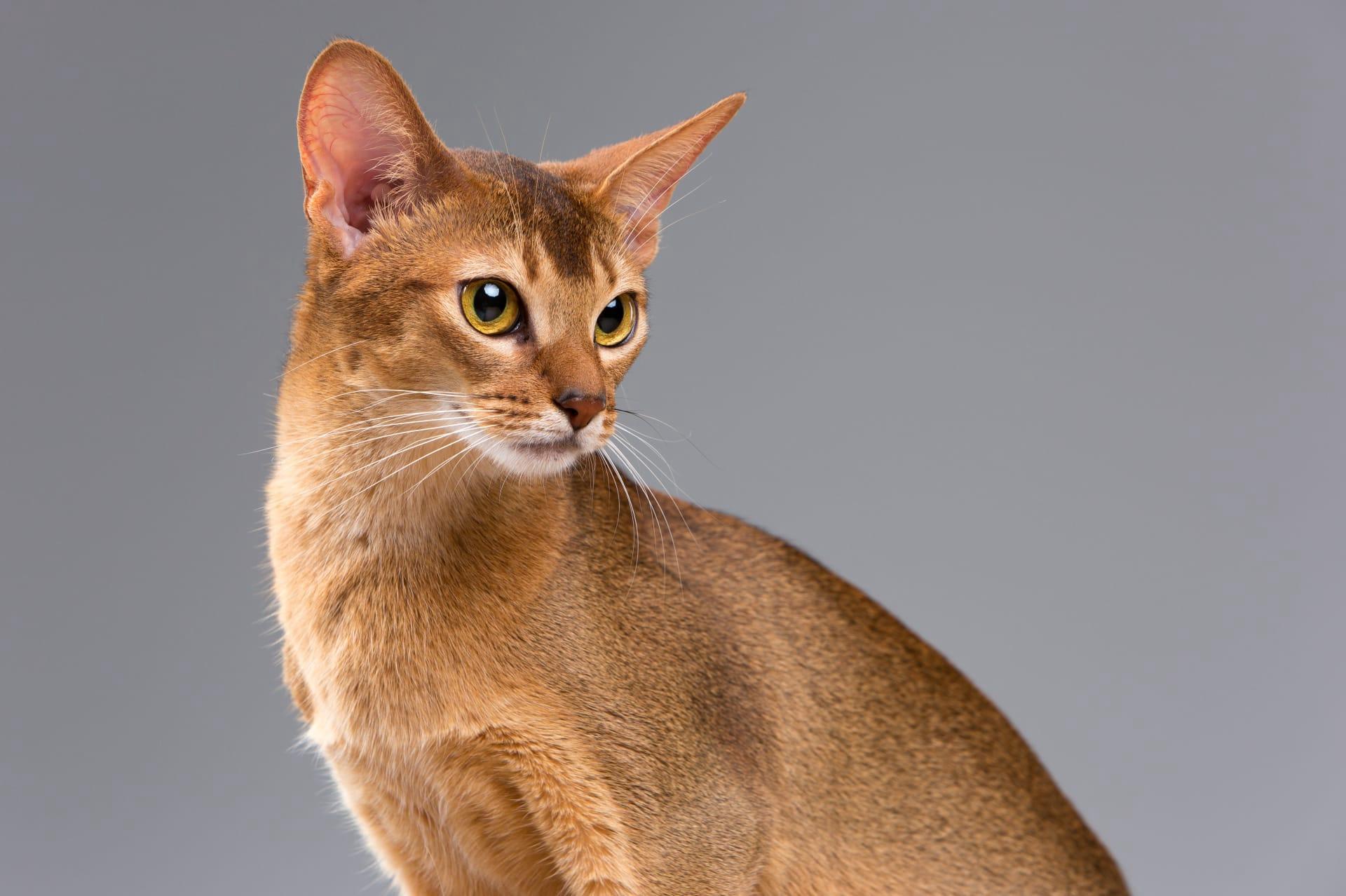Abyssinian Cat Characteristics
- Home /
- Mini Encyclopedia /
- Animal /
- Abyssinian Cat Characteristics
1
Abyssinian cats, with their sleek and muscular bodies, are medium-sized felines that typically weigh between 6 to 10 pounds (2.7 to 4.5 kg). They are known for their strikingly beautiful, ticked coats, where each hair has multiple bands of color. Their lithe form contributes to their agility and athleticism, making them exceptionally active and playful. Abyssinians have a relatively long lifespan for a cat, often living 12 to 15 years, with some reaching up to 20 years of age with proper care and a healthy environment.
The most remarkable organ of the Abyssinian cat is its highly developed and sensitive ears. These large, pointed ears are not just a distinct feature of their appearance but also serve a critical function in their survival and behavior. The ears are equipped with a wide range of motion, enabling the cat to detect even the slightest sounds from various directions. This heightened sense of hearing allows Abyssinians to be highly responsive to their environment, making them excellent hunters and curious explorers.

2
Question: What is the most common health issue in Abyssinian cats?
Answer: The most common health issue in Abyssinian cats is a genetic condition known as Pyruvate Kinase Deficiency (PKD). This hereditary disorder affects the enzyme that is crucial for red blood cell metabolism, leading to hemolytic anemia. Affected cats may show signs such as lethargy, weakness, and pale mucous membranes. Diagnosis is typically made through genetic testing, and while there is no cure, the condition can be managed with supportive care and regular veterinary monitoring to ensure the cat maintains a good quality of life.

3
Abyssinian cats are renowned for their high energy levels and love of play. They possess a natural athleticism that drives them to jump, climb, and explore their surroundings with grace and agility. This breed is especially fond of interactive toys that challenge their physical and mental abilities, often engaging in activities that mimic hunting behaviors.
When it comes to feeding, Abyssinian cats tend to have hearty appetites, matching their active lifestyle. They benefit from a balanced diet rich in protein to support their muscle mass and energy needs. Small, frequent meals or free access to food can cater to their metabolism, but it's crucial to monitor their intake to prevent overfeeding. A mix of dry and wet food can help maintain their hydration levels and provide variety.

4
The preferred living environment for an Abyssinian cat is one that offers plenty of space and stimulation. This breed thrives in environments where they can climb, explore, and play. Indoor living with access to cat trees, shelves, and interactive toys can meet their needs, but they also enjoy supervised outdoor access in safe, enclosed areas. Providing an enriched environment helps satisfy their curiosity and physical activity needs, preventing boredom and promoting well-being.
Abyssinians are relatively easy breeders, often reaching sexual maturity at around 9 to 12 months of age. They do not have a specific breeding season, making them capable of producing several litters a year if not monitored. Responsible breeding practices are crucial to prevent overpopulation and ensure genetic health. This breed is known for its affectionate nature towards kittens, with both males and females showing care and interest in the well-being of their offspring.

5
Book: "The Abyssinian Cat: Heritage and History" by Elaine Shelton (United States, 1995). This comprehensive guide delves into the origins and development of the Abyssinian cat breed, tracing its lineage back to ancient Egypt. Shelton's work is filled with fascinating anecdotes, detailed breed characteristics, and practical advice for breeding and care. It stands out for its thorough research and passionate portrayal of the breed's unique qualities and history.
Book: "Living with Abyssinians" by Peter Maxwell (United Kingdom, 2003). Maxwell's book offers an insightful look into the day-to-day joys and challenges of living with Abyssinian cats. Covering topics from nutrition and health care to behavior and training, the book is a valuable resource for both prospective and current Abyssinian cat owners. Through personal stories and expert advice, Maxwell captures the essence of what it means to share one's life with these energetic and affectionate felines.